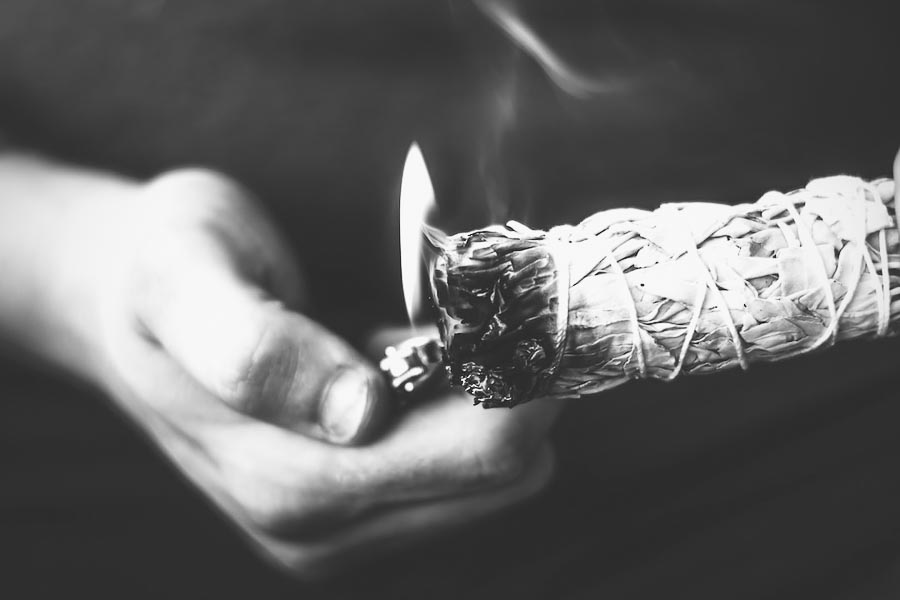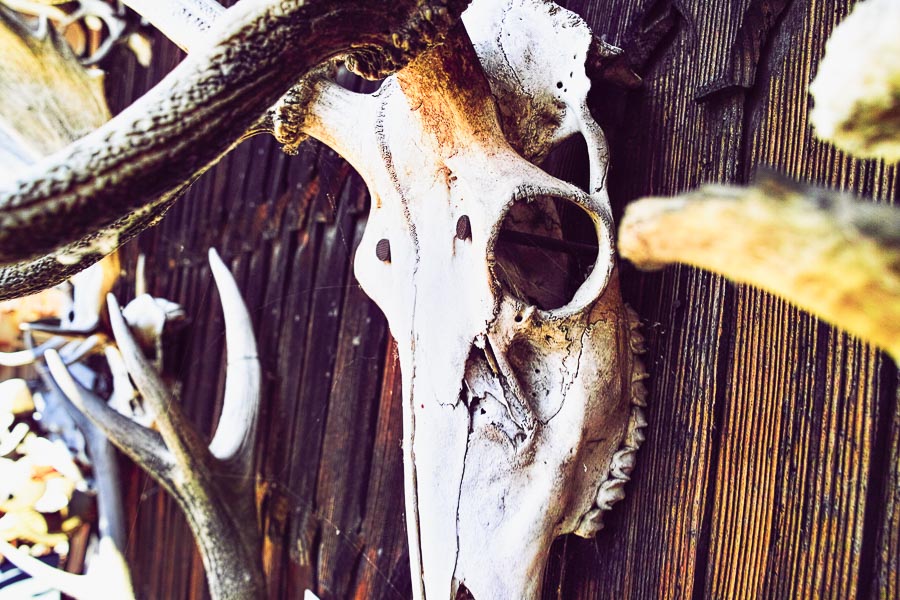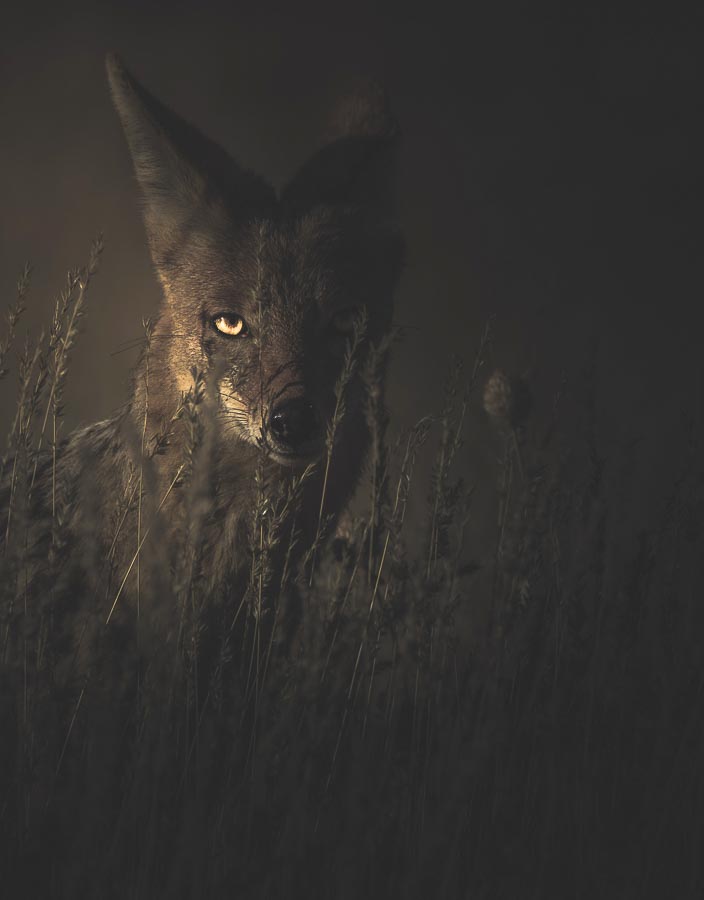Witches' Qi Elixir: Eleven Cauldron Flavors
All Hallows Evening: Celebrating Growth, Death, Renewal, and the Mystical Cycles Eleven Cauldron Flavors
 The Witches' Qi Elixir
The Witches' Qi Elixir
As the moonlight bathes the Earth during the last Full Moon in the Virgo Zodiac—falling between August 22nd and September 22nd, or alternatively, between August 17th and September 17th—we embark on an ethereal journey into the realm of "Eleven Cauldron Flavors."
This ancient and enigmatic elixir mirrors profound themes of growth, death, and renewal. In short, it represents the cycle of existence.
Join us as we venture into its intriguing ingredients, preparation rituals, and its deep connection with Halloween—a night when the veil between the living and the dead grows gossamer thin.
Section 1: The Ingredients
Unlocking the Secrets of Nature
In our quest to understand the essence of Eleven Cauldron Flavors, let's first explore its enigmatic ingredients. These herbs, each with their own stories to tell, play a vital role in the elixir's intricate alchemy.
Here, we provide you with not just their functions but also their historical and cultural significance:
| Common English Name | Pinyin Name | Chinese (Simplified) | Latin Name | Formula | Function and Properties | Cultural and Historical Significance |
| Turtle Shell | Gui Ban | 龟板 | Plastrum testudinis | 10-15% | Nourishes Yin and settles the Yang; used to treat conditions associated with excessive heat and Yang imbalances, such as high fevers, restlessness, and night sweats. | Turtle shells have been used for centuries in Chinese medicine, symbolizing longevity and resilience. They are often associated with protection and support. |
| Gecko | Ge Jie | 蛤蚧 | Gekko gecko L. | 10-15% | Benefits the Kidneys and tonifies the Lung, traditionally prescribed for conditions related to Kidney deficiency, such as lower back pain and impotence, as well as respiratory issues like chronic cough and asthma. | Geckos are considered powerful creatures in Chinese culture, symbolizing vitality and adaptability. They are sometimes associated with good fortune. |
| Deer Antler | Lu Rong | 鹿茸 | Cornu cervi Parvum | 10-15% | Fortifies the Kidneys and Yang, commonly used for conditions associated with Kidney deficiency, such as fatigue, weakness, and sexual dysfunction. | Deer antlers have a long history of use in traditional Chinese medicine, symbolizing strength and vitality, particularly associated with the deer's regenerative abilities. |
| Seahorse | Hai Ma | 海马 | Hippocampus | 10-15% | Strengthens the Kidneys and Yang, used in cases of Kidney deficiency, impotence, and infertility. Seahorse is thought to invigorate vital energy. | Seahorses are believed to possess medicinal properties and have been used in Chinese medicine for their association with strength and vitality, as well as their connection to oceanic forces. |
| Placenta | Zi He Che | 紫河车 | Placenta hominis | 10-15% | Powerfully tonifies Qi and Yang and benefits essence (Jing), used to restore vitality and essence and is often prescribed for conditions of weakness and debility. | The use of placenta in Chinese medicine is rooted in its role in nurturing new life, symbolizing the essence of creation and growth. |
| Rehmannia Root | Sheng Di Huang | 生地黄 | Rehmannia glutinosa | 10-15% | Cools the blood and nourishes Yin, used to address conditions characterized by excessive heat and dryness, such as fever, irritability, and dry mouth. | Rehmannia root has a history of use for its cooling properties and association with the element of water, symbolizing balance and tranquility. |
| Asiatic Cornelian Cherry Fruit | Shan Zhu Yu | 山茱萸 | Cornus officinalis | 10-15% | Stabilizes the Kidneys and contains Essence, used to treat conditions related to Kidney deficiency and Essence depletion, such as lower back pain and premature aging. | The Asiatic Cornelian cherry fruit is considered an important tonic herb, symbolizing the preservation of vital energy and essence in the body. |
| Chinese Yam | Shan Yao | 山药 | Rhizoma Dioscoreae | 10-15% | Tonifies the Spleen, Stomach, Lungs, and Kidneys, known for its ability to strengthen digestion and nourish various organs in the body. | Chinese yam has a reputation for nourishing the body's core organs and is associated with stability and nourishment. |
| Poria Mushroom | Fu Ling | 茯苓 | Poria cocos | 5-10 | Strengthens the Spleen and drains Dampness. It is commonly used to address issues related to digestive disturbances, fluid retention, and edema. | Poria mushroom is valued for its ability to support digestion and remove dampness, symbolizing purification and cleansing. |
| Alisma Rhizome | Ze Xie | 泽泻 | Alisma plantago-aquatica | 5-10 | Drains Kidney Fire and promotes urination. Used to clear heat and reduce fluid retention, making it beneficial for conditions like urinary tract infections and edematous swelling. | Alisma rhizome is associated with the element of water and is used to clear heat, symbolizing the power of water to cleanse and cool. |
| Tree Peony Bark | Mu Dan Pi | 牡丹皮 | Cortex Moutan Radicis | 5-10% | Clears Heat, cools Blood, and invigorats Blood circulation. Often used to treat conditions associated with Blood stasis and excessive heat in the body, such as skin rashes and menstrual disorders. | Tree peony bark is known for its ability to cool and invigorate the blood, symbolizing renewal and freshness. |
Section 2: Halloween and the Thin Veil Between Worlds

A Night of Mystery, Transcendence, and Celestial Alignments
Halloween, a night shrouded in ancient traditions, harmonizes not only with the Virgo Zodiac sign but also with celestial alignments that add an extra layer of mystique to this enchanting holiday. Halloween's connection to astronomy is rooted in its position on the calendar, strategically situated halfway between the Autumnal Equinox and the Winter Solstice.
This mid-point on the calendar, known as a "cross-quarter day," carries profound significance for Celtic people and other ancient cultures. It marks the transition from the light to the dark half of the year, symbolizing the onset of colder, darker days and the waning of light. For the Celts, this marked the beginning of Samhain, a festival celebrating the harvest and honoring the dead.

As you gaze into the night sky on Halloween, you may notice celestial wonders that add to the sense of mystery and magic, including the constellation Perseus and the bright star Mirfak.
However, what truly adds an astronomical touch to Halloween is the presence of the star Algol, often referred to as the "ghoul" star.
Algol is a part of the constellation Perseus and marks the head of the hideous monster Medusa. Its name, Algol, is derived from the Arabic term "Ra's al-Ghul," which translates to "the demon's head."
The star Algol has a fascinating characteristic; it appears to "wink" or dim in brightness every 2.87 days due to an eclipsing binary system, making it seem even spookier.
As you revel in the festivities of Halloween, you can also look up to the night sky and ponder the celestial alignments that have added to the intrigue of this ancient holiday.
Halloween's connection to astronomy reminds us that the mysteries of the cosmos and the mysteries of the spirit world are intertwined in the fabric of human culture and tradition.
Section 3: Preparation and Alchemy

Conjuring the Elixir
To unlock the arcane powers of Eleven Cauldron Flavors, one must wait for the full moon to ascend to its zenith (timing varies by year and location).
Then, prepare the herbs for tincturing, infusing them with the otherworldly essence of the moonlight. Add the tincture menstruum—a blend of 40-50 percent alcohol and 50-60 percent water. Allow it to sit until the next full moon, placing it on the northernmost side of your home, symbolizing Yin and darkness.
When the next full moon arrives, strain and press the tincture, storing it for use starting on October 31st (Samhain: The Festival of the Dead), when the boundary between realms is most porous.
Usage:
Upon awakening, take 30 milliliters (3 droppersful), waiting 30 minutes before partaking of earthly sustenance.
Repeat this dosage 30 minutes before the midday repast and conclude your daily ritual with a final dose of 30 milliliters (3 droppersful) two hours before the sun's descent into the otherworldly twilight.
As October 31st approaches, continue imbibing the elixir until the Spring Equinox, following a schedule of five days on and two days off, guided by the rhythms of the hidden world.
Section 4: The Mystical Essence of Eleven Cauldron Flavors
Alchemy with Qi Tonics
What sets Eleven Cauldron Flavors apart is its infusion of five potent Qi tonics—the first five herbs in the formula. Together, these eleven ingredients not only fortify Kidney Yin, Yang, Qi, and Jing but also unveil a world of ancient mysteries.
Much like Halloween itself, this elixir is a celebration of the enigmatic themes of death, growth, and renewal. It is a concoction woven with inspiration, folklore, and the secrets of the night—a blend meant for far more than mere medicinal use.
Section 5: Liuwei Dihuang Wan
The Enigmatic Origins of Eleven Cauldron Flavors
Eleven Cauldron Flavors traces its lineage to Liuwei Dihuang Wan, a formula shrouded in the mists of time, introduced during the Song Dynasty by the sage physician Qian Yi. Crafted meticulously, Liuwei Dihuang Wan systematically empowers the Kidney, unveiling the cryptic stages of post-natal Kidney Jing.
The ultimate goal of Liuwei Dihuang Wan is to strengthen and tonify (replenish) the Kidney, but to do so systematically, ensuring that each requisite step of gaining post-natal Kidney Jing is addressed, each included herb is balanced, and the requisite organs are benefited.
In this formula, Kidney Jing is expressed as (State Administration of Traditional Chinese Medicine, Advanced Textbook on Traditional Chinese Medicine and Pharmacology (vol. 1), 1995-6 New World Press, Beijing):
Essence is the material basis of qi. Qi derives from essence, and the functional activity of qi, in turn, produces essence. For example, primordial qi is transformed from congenital essence, while acquired essence is derived from food through the function of the stomach and spleen. Abundant congenital essence leads to vigorous primordial qi, promotes the stomach and spleen's functional activity and enhances acquired essence. In this way, congenital essence is continuously replenished."
"Essence and blood can mutually transform into each other. Essence and blood are stored in the kidney and liver respectively. Abundant essence in the kidney ensures rich blood in the liver. Abundant blood in the liver generates more essence for the kidney."

But what makes the Eleven Cauldron Flavors unique is the essential alchemy performed with the inclusion of five potent, rare Qi tonics:
- Gui Ban
- Ge Ji
- Lu Rong
- Hai Ma
- Zi He Che
Together, the Eleven Cauldron Flavors fortifies the Kidney Yin, Yang, Qi, and Jing. This is a formula that, like Halloween, is to celebrate death, growth, and renewal.
This is a formula of inspiration and mystery, of folklore and fun—this is not a formula of use.
These are all herbs pulled from Classical Chinese and Traditional Chinese Medicine.
Section 6: Embracing the Wisdom of Fall, Earth, and the Spleen and Stomach
Nurturing the Body and Soul
Within the intricate tapestry of Chinese medicine, each season is imbued with a unique spirit and essence. As we welcome the embrace of Fall, we venture into the realm of Earth, where the spirit Hun—the Ethereal Soul—holds dominion. Hun, akin to the rustling leaves and the bountiful harvest, represents the ethereal facets of the self, responsible for our dreams, visions, and inspirations.
Yet, the enchantment of Autumn extends beyond the ethereal. It resides within the Earth element, where the Spleen and Stomach preside as stewards of our physical and spiritual well-being. These organs, much like guardians of the earthly realm, oversee digestion and assimilation, bestowing upon us the vital sustenance necessary for our spiritual journey. Just as the soil nurtures seeds, the Spleen and Stomach transmute food into Qi—the essential life force—fuelling our existence.
Section 7: Chinese Medicine's Insight into Fall's Five Spirits
Harvesting Wisdom from Nature and the Spirit Hun
In the realm of Chinese medicine, a seamless tapestry connects the rhythms of nature, the human body, and the spirit world. As we embark on a deeper exploration of the enigmatic elixir known as Eleven Cauldron Flavors and its alignment with Halloween, let us unveil the hidden wisdom embedded within the Five Spirits, the Earth element, and the ethereal entity known as Hun.
The Season of Fall and the Earth Element:
Fall, also known as autumn, aligns with the Earth element in Chinese medicine—a season rich in symbolism and profound significance. The Earth element signifies transformation, nurturing, and the ripening of both earthly and inner fruits. Just as the Earth tenderly cradles and sustains the harvest, our bodies focus on nourishing and processing the bounty of the season. It is a time when the Earth element's energies peak, drawing our awareness to the core of our existence—the digestive system.
The Role of the Spleen and Stomach:
Within the realm of the Earth element, the Spleen and Stomach assume paramount roles. These essential organs have the responsibility of breaking down the nourishment we derive from our sustenance, adeptly transforming it into the life force that sustains us. Similar to diligent farmers tending to their fields, the Spleen and Stomach labor tirelessly within our bodies, ensuring we are nourished, invigorated, and prepared to embrace the transitions of the seasons.
The Spirit Hun:

Beyond the physical realm, we encounter the enigmatic spirit known as Hun—a mystical entity residing within the ethereal domain. In the realm of Chinese medicine, the Hun finds its association with the Liver and plays a profound role in shaping our spiritual and emotional well-being. During the fall season, the Hun thrives on the Earth element's energies, granting it the power to guide our intuition, kindle our creativity, and illuminate the path toward a brighter future.
In this union of nature, body, and spirit, we uncover the profound interconnectedness that underscores the wisdom of Chinese medicine—a wisdom that extends to the essence of Eleven Cauldron Flavors, bridging the tangible and mystical, and reminding us that the cycles of life, death, and renewal are ever-present in the rhythms of nature and the heart of Chinese medicine.
The Connection to Eleven Cauldron Flavors:
Eleven Cauldron Flavors, like the changing seasons, embodies the principles of transformation and nourishment. As we prepare and consume this elixir, we tap into the ancient wisdom of Chinese medicine and the cyclical nature of existence. The Earth element, the spirit Hun, and the diligent work of the spleen and stomach are harmonized within the elixir, offering not only physical but also spiritual nourishment. It's a connection that bridges the gap between the tangible and the mystical—a reminder that the mysteries of life, death, and renewal are ever-present in the cycles of nature and the essence of Chinese medicine.
Section 8: Halloween Greeting
Wishing You a Happy and Safe Halloween
Before we conclude, it's essential to emphasize two critical points:
The Conservation Imperative: Protecting Earth's Precious Species
Two Vital Messages: A Reiteration
Firstly, this article was originally published in 2016, and if it feels familiar, that's the reason.
Secondly, since our initial publication, there's been a disheartening reversal in China's stance on the 25-year ban on the use and trade of rhino and tiger parts. It is essential to emphasize the stark contrast between these practices and the fundamental principles of Chinese medicine, which are deeply rooted in harmony with nature.
Chinese medicine, at its core, reveres the balance and interconnectedness of all living beings and the natural world. The use of endangered species, such as rhino and tiger parts, runs counter to this philosophy. It threatens not only these magnificent creatures but also the delicate ecosystems they inhabit.
The lifting of this ban is a somber reminder of the challenges we face in preserving our planet's biodiversity. We must stand resolute in our commitment to protect Earth's precious species and habitats. Let us continue to celebrate the wisdom of Chinese medicine, which is inseparable from its reverence for the natural world. It is our duty to ensure that the practice of Chinese medicine remains a beacon of harmony and sustainability, in accordance with its true essence.
Conclusion: Celebrating Growth, Death, Renewal
Embracing the Cycles
In closing, "All Hallows Evening: Exploring Growth, Death, Renewal, and Mystical Cycles through Eleven Cauldron Flavors" invites you to embark on a journey that transcends time and tradition. As you explore the mysteries of this ancient herbal elixir, may you find inspiration in the enigmatic themes of death, growth, and renewal. This elixir is not just a formula; it is a celebration of folklore and fun—a connection to the mystical world, reminding us that the cycles of life are ever-present, and the secrets of nature await our discovery.
Site Disclaimers
General Guidence
The content on this site is provided for educational and informational purposes only and should not be construed as medical advice. Always consult a qualified healthcare provider before making changes to your diet, lifestyle, or health regimen, particularly if you are pregnant or nursing, under the age of 18, managing allergies or known sensitivities, or living with any medical conditions.
At RAW Forest Foods, your safety is our priority. Please note that our products are dietary supplements, not medications. The following disclaimer applies:
* These statements have not been evaluated by the Food and Drug Administration. These products are not intended to diagnose, treat, cure, or prevent any disease.
Ingredient Transparency and Allergen Awareness
We are committed to providing transparent ingredient information to help you make informed decisions. If you have or suspect you have allergies to any of our ingredients, we strongly advise against using our products, as allergic reactions can be severe.
Interaction with Medications
If you are taking any medications, consult with your healthcare provider before using supplements. Certain supplements may interact with medications, potentially altering their effectiveness or causing unwanted effects.
For more details, please review our full Terms and Conditions.






